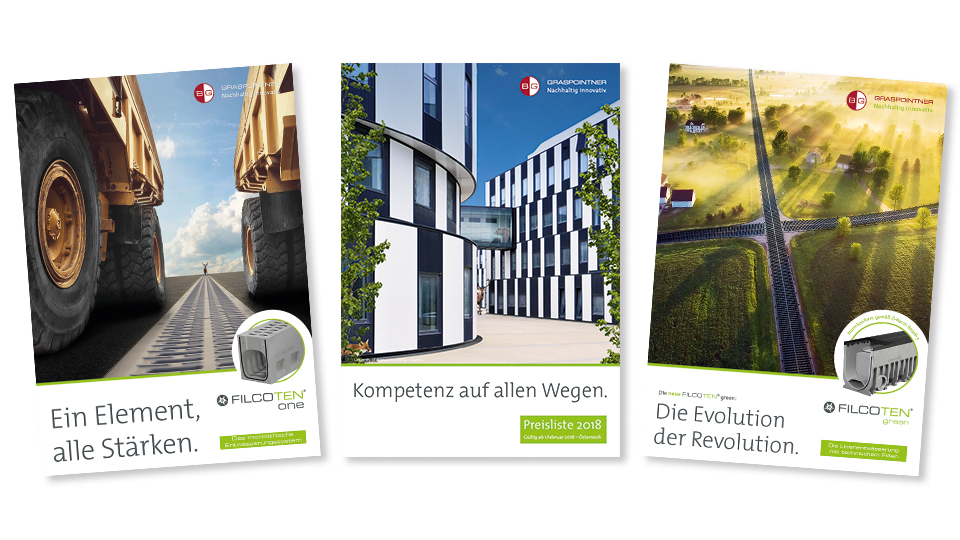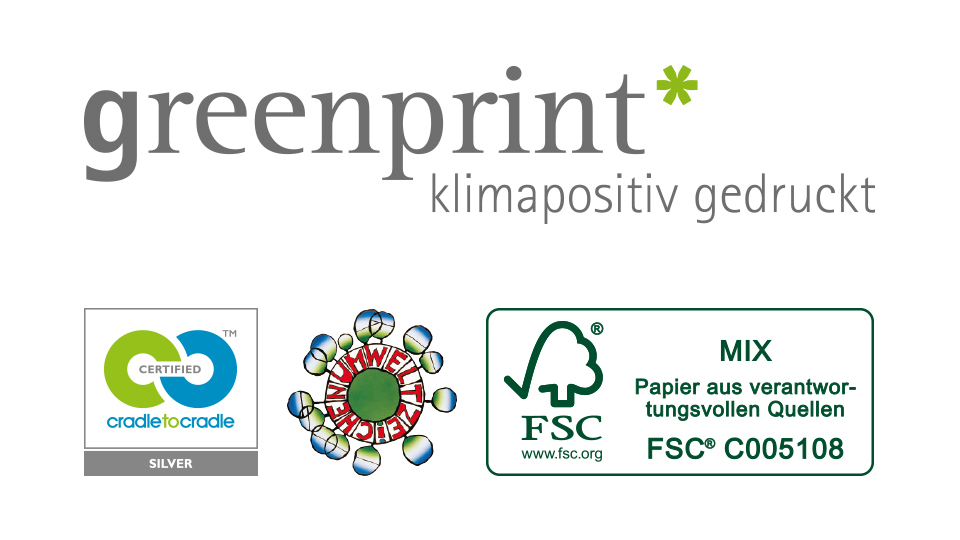Everyone likes to be sustainable. We are taking it seriously, and we’re also making our approach transparent for print products.
Ecological print products
Green means go!
Ecological print products
Green means go!
What does sustainability actually mean?
After all, the word can be found in every second annual report or strategy paper, and until you look behind the scenes, all claims to environmental friendliness feel the same. To us, it’s only sustainability, if our own actions take full responsibility for the future.
Hard facts, not just PR
Of course, this is also a PR article. But the important thing is: We are serious, and we would like to invite you to learn about our strict guidelines and to double-check our claims. Take our print products as an example. You’ll see that the “green” facade isn’t everything.
The right partner: printing company gugler
Marcus Renn (Head of Marketing at BG Graspointner):

“FILCOTEN® HPC is only the beginning. Our ecological orientation is also reflected in other areas. As an example, since mid-2017, we have been working exclusively with the renowned printing company gugler to produce our print products.”
The company based in Melk, Austria could not be a better fit. Since 1989, they have been combining economic success with the highest socio-ecological demands.
Better than recycling
gugler is the only printing company in the world working according to the Cradle to Cradle® concept. Other products in line with this concept include pens by Stabilo or detergents by Frosch. The design concept was developed by Prof. Dr. Michael Braungart, William McDonough and EPEA Internationale Umweltforschung Hamburg (Environmental Protection Encouragement Agency) in the 1990s. Ever since, it has been setting far-reaching, particularly strict criteria.
Only products with components that can be recycled to 100 % as part of technical or biological products are certified as Cradle to Cradle®. For this reason, it is important to ensure that all components are either composted or recycled as nutrients or as source materials for new products once they are no longer used, as early as the concept phase. In this way, raw materials are never lost, but basically re-used infinitely.
Marcus Renn:
“To us, it makes sense to have a partner who shares our values and whose standards regarding ecological action are just as strict as ours. Being verifiable is especially important to us. This is how we distinguish ourselves from those who just pretend to take ecological responsibility seriously.”
Hard criteria for a supposedly soft topic
The comprehensive concept is based on the five criteria of water, electricity, social matters, material health and material recycling. Of course, only renewable energies may be used for the certification according to Cradle to Cradle®, and waste water must be free from process chemicals.
Material health is where it gets interesting. Conventional environmental certificates merely assure manufacturers that their suppliers are not using any known harmful substances. But what about the unknown? After all, scientists are always finding new culprits. This is where Cradle to Cradle® steps in.
Ernst Gugler (founder and managing partner of gugler):

“Cradle to Cradle® only approves substances that are proven to be harmless. Substances that have not been proven to be harmless or that have not yet been examined are not permitted.”
However, this also means significantly more effort. The final product is produced in several loops, getting closer and closer to the perfect solution combining harmlessness and functionality. gugler now uses 22 certified components, more and more of which are approved for the gold version of the certification seal.
Way ahead of the infrastructure
And what about recycling? Today’s recycling systems have not yet adjusted to the idea. In the recycling process for print products, color and paper are separated from one another. Using conventional printing inks produces toxic sludge that must be disposed of as special waste.
Ernst Gugler:
“For Cradle to Cradle® products, these color residues become organic sewage sludge that could nourish the next set of growing trees on fields and meadows. However, since there is no separate, self-contained recycling system for Cradle to Cradle® paper waste, these harmless printing by-products are simply included in the normal recycling loop, merely reducing its toxicity.”
Therefore, gugler is planning its own recycling system in Austria for 2022 which makes it possible to also apply the potential of Cradle to Cradle® to recycling.
Another step further
In addition to Cradle to Cradle® and the FSC seal that implies strict requirements for sustainable forest management, BG Graspointner’s brochure also includes another seal: greenprint*.
This certification was developed by gugler itself and is provided to the printing company’s customers on request. It stands for climate-positive printing, meaning that the product’s CO2 emission is not simply conserved or satisfied by certificates (this would be climate-neutral). Instead, the printing company’s customer undertakes to acquire additional certificates worth 10 % of the actual CO2 footprint to benefit the environment.
Marcus Renn:
“Of course, we decided in favor of this option.”
The core of the matter
There is no alternative when it comes to ecological action, i.e. to use resources in a particularly responsible way or to minimize harmful and toxic substances. We figured this out a long time ago and developed a construction material that meets this ideal like no other in its field: FILCOTEN® HPC. This environmental-conscious approach is an integral part of our brand essence and accompanies us in our everyday decision-making.









